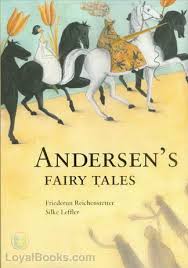Chapter V — Metamorphosis of the Copying-Clerk
byChapter V reveals a strange irony in the clerk’s journey—what was meant to be freedom turns into an entirely new form of captivity. As a lark, he once soared with joy, unburdened by papers, ink, and deadlines. Yet now, confined to a gilded cage beside a nostalgic Canary and a self-important Parrot, he feels more trapped than ever. Their world is one of melodies and mimicry, but none of it feels truly free. The Canary’s voice, though sweet, carries a weight of longing that reflects the emptiness inside him. He sings no song of his own, only absorbing the emotion in others. The light through the window tempts his gaze, but his wings are useless behind the bars. The same clerk who dreamed of poetic air and lyrical skies now shares in the collective sorrow of those who know too well what they’ve lost and what they cannot reach again.
Within this opulent room, the cages are polished and the conversations flow, but none of it masks the clerk’s realization. He begins to see that desire alone cannot create freedom—it often misleads us into new forms of confinement. His wish to escape the dull routine of clerical life has only swapped desks and ledgers for wire bars and songbird competition. The Parrot’s endless chatter about ancestors and elegance grates against the lark’s silence. He once thought life as a bird would offer simplicity and beauty, but now finds the same frustrations, only decorated differently. The Canary’s mournful tunes awaken emotions he hadn’t understood as a man. Those feelings now flood his heart, without the language to express them. His identity dissolves between two selves, each yearning, each unfulfilled.
Days pass without clarity, only the steady rhythm of the household and occasional visits from curious guests. Children tap at the cage with cheerful ignorance, laughing at his feathers, unaware of the soul inside. They find joy in his chirps, not knowing they echo a human mind lost in reflection. Though the body is birdlike, his thoughts remain painfully human. He recalls lunches by the canal, the rhythm of cobbled streets, and the whisper of old books—simple things now imbued with sudden beauty. They were overlooked back then but treasured now. The lark’s beady eyes see the past not with regret, but with new understanding. His transformation didn’t deliver liberation—it revealed what he had missed when he thought he was free.
Evenings in the drawing-room come with candlelight and soft conversations, but they only deepen his solitude. Other pets are praised, their tricks rewarded with crumbs, yet no one suspects the lark’s silent turmoil. He doesn’t want a treat; he longs for wind on his wings. Around him, music plays and flowers bloom, but every luxury is hollow. He isn’t alone, yet he feels the ache of being misunderstood. The Canary sings of wild meadows and distant skies she may have never seen. Still, her longing is real. The Parrot repeats phrases he doesn’t understand, an echo of a world beyond. All three live in symbols—one in song, one in pride, and the lark in quiet grief.
This bittersweet episode speaks gently to the reader about the hidden consequences of wish fulfillment. Often, in chasing what seems brighter or freer, we abandon what quietly sustained us. The clerk, seeking escape, found performance. He mistook flight for freedom, but in truth, he traded routine for limitation in disguise. What Andersen shows here isn’t just a magical mishap—it’s a reflection of how dissatisfaction grows when we expect joy to be elsewhere. The deeper truth is this: comfort can be found in what we already have, if we learn to notice it. Contentment isn’t about wings or status, but perspective. The lark understands this now, though the cost was steep.
The room becomes not just a setting, but a metaphor for the subtle prisons built by misguided dreams. Freedom, Andersen suggests, is not just about motion—it is about meaning. When desires go unchecked by self-awareness, they turn deceptive. This is not a tale of punishment, but of recognition. The lark’s reflection teaches us to consider the motives behind our longing. Often, the idea of happiness is mistaken for a destination, when in fact it’s a state of being. There is no perfect elsewhere if we carry discontent within. In finding this truth, the lark reclaims part of himself.
In a strange way, the transformation teaches the clerk something he never learned behind his desk. He now listens deeply, sees more fully, and feels with greater depth. These are not skills taught in school or acquired through ambition—they are born of presence and patience. The cages around him are real, but so is the awakening within. Andersen’s tale urges us to examine what we truly seek when we ask for more. The lark’s sorrow is a quiet teacher, reminding us that the ability to see beauty in the ordinary might be the truest form of flight. And perhaps, just perhaps, that lesson lasts longer than any magical spell ever could.

